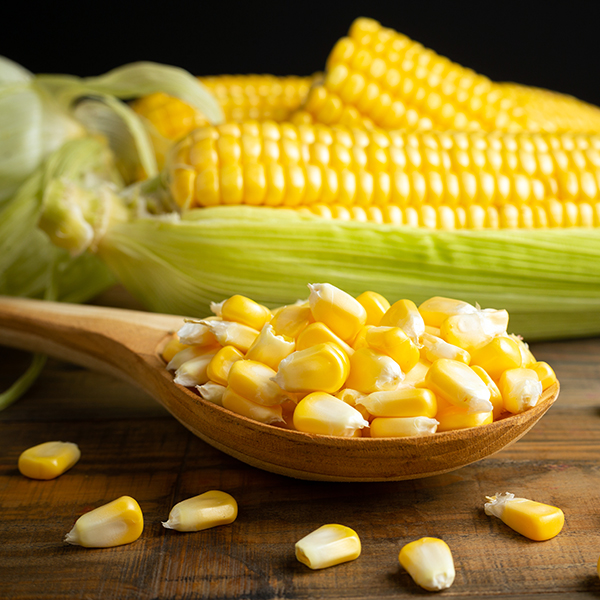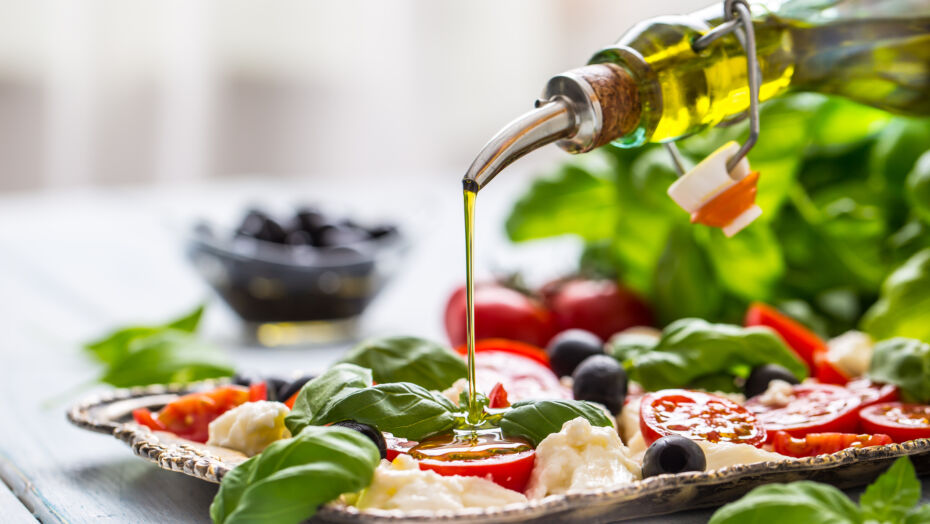Products
At Nathhari, we are dedicated to bringing you the best in grains, vegetables, and rice—because we believe in feeding the world with quality, sustainably grown products.
The Freshest. Chemical-Free.
Fresh and Premium Quality
We ensure that all products are fresh, carefully harvested, and properly stored.
Sustainability
We are committed to sustainable sourcing practices, supporting local farmers, and minimizing our environmental impact.
Global Reach
Our products are exported globally, ensuring that customers around the world have access to the best agricultural produce.
Competitive Pricing
We offer competitive prices without compromising on quality, ensuring value for money.

01.
Maize
Maize, also known as corn, is a cereal crop that originated in Central America and is now grown worldwide. It’s a staple food in many countries and is used for human consumption, animal feed, and industrial products like biofuel. Maize has tall stalks with large ears containing rows of kernels, which come in various colors including yellow, white, red, and even blue. It’s a key component in many foods, such as cornmeal, tortillas, popcorn, and corn syrup.
- White Maize
- Yellow Maize
- Kernel Maize Cattle Feed
- Maize Grain Seed
- Corn Starch
- Corn Oil
- Corn Flakes
- Liquid Glucose
- Dextrin
- Maltodextrin
- Sorbitol
- Sweet Corn

02.
Jaggery
Jaggery is a traditional, unrefined sweetener made from sugarcane juice or palm sap. It’s commonly used in South Asia, Africa, and Latin America and is known for its rich, caramel-like flavor and golden-brown color. Unlike refined sugar, jaggery retains molasses and natural minerals, making it a more nutritious option. It’s often used in sweets, beverages, and traditional medicine for its warming properties and digestive benefits.
- Jaggery Powder
- Jaggery Cubes
- Jaggery Blocks
- Jaggery Balls
- Palm Jaggery
- Jaggery Chikki
- Jaggery Rewdi
- Jaggery Granules
- Sugarcane Jaggery
- Coconut Jaggery
- Jaggery Chana
- Spicy Jaggery

03.
Rice
Rice is a staple food for more than half of the world’s population. It’s a cereal grain that comes in many varieties, such as white, brown, basmati, and jasmine. Rich in carbohydrates, rice provides essential energy and pairs well with countless dishes across cultures. It’s typically boiled or steamed and used in everything from sushi and risotto to biryani and fried rice.
- 1121 Basmati
- 1509 Basmati
- Pusa Basmati
- Golden Sellu Basmati
- Sugandha Basmati
- Sharbati Basmati
- Ambemohar
- Dubraj
- Inarayani
- Parboiled Rice
- Non Basmati White Rice
- Sona Masoori
- IR 64 : Jasmine, Ponni, Brown
- Kolam Rice
- Navar Rice
- Palakkadanmatta Rice

04.
Sugar
Sugar is a sweet, crystalline substance made primarily from sugarcane or sugar beets. It’s commonly used as a sweetener in foods and beverages, and also plays a role in baking, preserving, and fermentation. While it adds flavor and texture, excessive consumption can lead to health issues like obesity and diabetes. Sugar comes in various forms, including white, brown, and powdered.
- White Refined Sugar
- L30 L31
- S30 S130 S230
- M30 M31
- Lcumsa 45
- Brown Sugar
- Raw Sugar

05.
Dehydrate Powder
Dehydrated powder is a form of food or ingredient that has had its moisture removed through drying processes like air-drying, freeze-drying, or spray-drying. This extends shelf life, reduces weight for easier storage and transport, and preserves flavor and nutrients. Common examples include powdered milk, soup mixes, and spice blends. To use, it’s often rehydrated with water or added directly to recipes.
- Tamarina Powder
- Tomato Powder
- Ginger Powder
- Lemon Powder
- Red Beet Root Powder
- Pomegranate Powder
- Coriander Powder
- Spinach Powder
- Carrot Powder
- Mint Powder
- Strawberry Powder
- Banana Powder
- Papaya Powder
- Pineapple Powder
- Orange Powder
- Watermelon Powder

06.
Millets
Millets are a group of small-seeded, nutrient-rich grains that have been cultivated for thousands of years, especially in Asia and Africa. They are gluten-free, high in fiber, and packed with essential minerals like iron, magnesium, and phosphorus. Millets are drought-resistant and grow well in arid regions, making them a sustainable crop.
- Finger Millet (Ragi/mandua)
- Pearl Millet (Bajra)
- Sorghum (Jowar)
- Foxtail Millet (Kado/Kodra).
- Bamyard Millet (Sawa/Sanwa)
- Little Millet (Katri/Moraiyo)
- Amaran th (Chaulai)
- Buckwheat (Kuttu)

07.
Atta & Maida
Atta is whole wheat flour commonly used in South Asian cooking, especially for making chapatis, rotis, and parathas. It’s made by grinding whole wheat grains, retaining the bran, germ, and endosperm, which makes it high in fiber and more nutritious. Maida, on the other hand, is refined white flour made by milling wheat and removing the bran and germ. It’s fine, soft, and used in baking, pastries, breads, and fried snacks. Though versatile, maida is less nutritious compared to atta due to the refining process.
- Whole Wheat Atta
- Multigrain Atta
- Besan (Gram Flour)
- Chakki Atta
- Maida
- Bajra Atta
- Jawar Atta
- Ragi Atta
- Maize Atta
- Gluten-Free Atta
- Tundoori Atta
- Suji
- Rawa
- Soyabean Chunks

08.
Fruits & Vegetables
Fruits and vegetables are essential parts of a healthy diet, rich in vitamins, minerals, fiber, and antioxidants. Fruits are typically sweet or tangy and come from the flowering part of plants, like apples, bananas, and berries. Vegetables are usually savory and include roots, stems, leaves, and flowers of plants, such as carrots, spinach, and broccoli. They help support overall health, boost immunity, and reduce the risk of chronic diseases. Eating a variety of colorful fruits and vegetables is key to balanced nutrition

09.
Pulses
Pulses are the edible seeds of leguminous plants, such as lentils, chickpeas, beans, and peas. They are a rich source of plant-based protein, fiber, vitamins, and minerals like iron and folate. Pulses are low in fat, gluten-free, and play a vital role in vegetarian and vegan diets. They also support sustainable agriculture by improving soil health through nitrogen fixation. Commonly used in soups, stews, curries, and salads, pulses are both nutritious and versatile.
- Chickpeas
- Kabuli Chana
- Desi Chana
- Pigeon Peas(Tur Dal/ Arhar Dal)
- Green Gram (Moong Dal)
- Black Gram CUrad Dal)
- Red Lentils (Masoor Dal)
- Kidney Beans (Rajam)
- Black Eyed Peas (Lobia)
- Horse Grom (Kulthi)
- Split Chickpeas (Chana Dal)
- Moth Beans (Matki)
- White Peas (Matar)
- Bengal Gram (Chana Dal)
- White Lentils (White Urad Dal).
- Green Pigeon Peas (Hare Tuvar Dal)
- Black Chana (Kale Chane)

10.
Oil Seeds
Oil seeds are seeds that are grown primarily for the extraction of edible oils. Common examples include soybeans, sunflower seeds etc These seeds are rich in healthy fats, protein, and essential nutrients like vitamin E and omega-3 fatty acids. Besides being pressed for oil, they’re also used in cooking, baking, and as snacks. Oil seeds play a key role in global agriculture and nutrition.
- Groundunt (Peanut)
- Soybean
- Rapeseed/Cahala
- Mustard
- Sesame
- Sunflower
- Safflower
- Castor
- Linseed
- Cottonseed
- Poppy
- Niger
- Walnut
- Oat

11.
Cooking Oil
Cooking oil is a fat used in food preparation for frying, sautéing, baking, and dressing salads. It’s derived from plant sources like sunflower, soybean, canola, olive, coconut, and mustard seeds. Cooking oils vary in flavor, smoke point, and nutritional content—some are rich in healthy fats like omega-3s and vitamin E. Choosing the right oil depends on the cooking method and health preferences.
- Olive Oil
- Canala Oil
- Peaunt Oil
- Avocado Oil
- Sunflower Oil
- Safflower Oil
- Corn(Maize) Oil
- Soybean Oil
- Coconut Oil
- Rice Bran Oil
- Sesame Oil
- Palm Oil
- Castor Oil
- Mustard Oil
- Ghee
- Butter

01.
Vegetables
The vegetable import-export business involves the trade of fresh, frozen, canned, or dried vegetables across international borders. It plays a crucial role in meeting the global demand for fresh produce, especially in regions where local agriculture cannot produce sufficient amounts of certain vegetables due to climate, soil conditions, or seasonality.
- Sub Product
- Sub Product
- Sub Product

08.
Fruit
The vegetable import-export business involves the trade of fresh, frozen, canned, or dried vegetables across international borders. It plays a crucial role in meeting the global demand for fresh produce, especially in regions where local agriculture cannot produce sufficient amounts of certain vegetables due to climate, soil conditions, or seasonality.
- Nulla placerat viverra
- Cursus viverra
- Vitae interdum eget
Mia Janne

Subscribe To Get Special Offer
“Your support means the world to us—subscribe now and be a part of the journey!”
